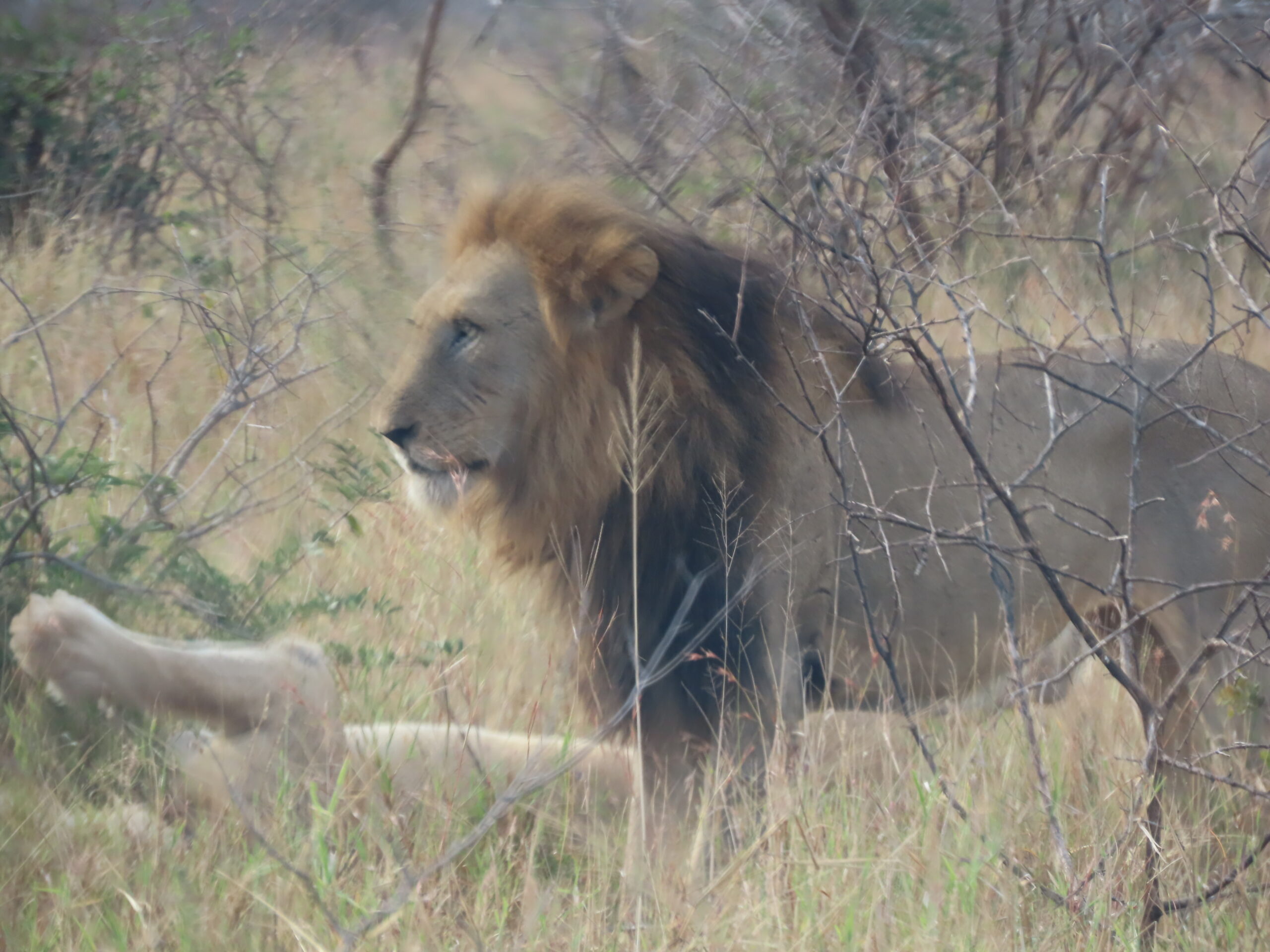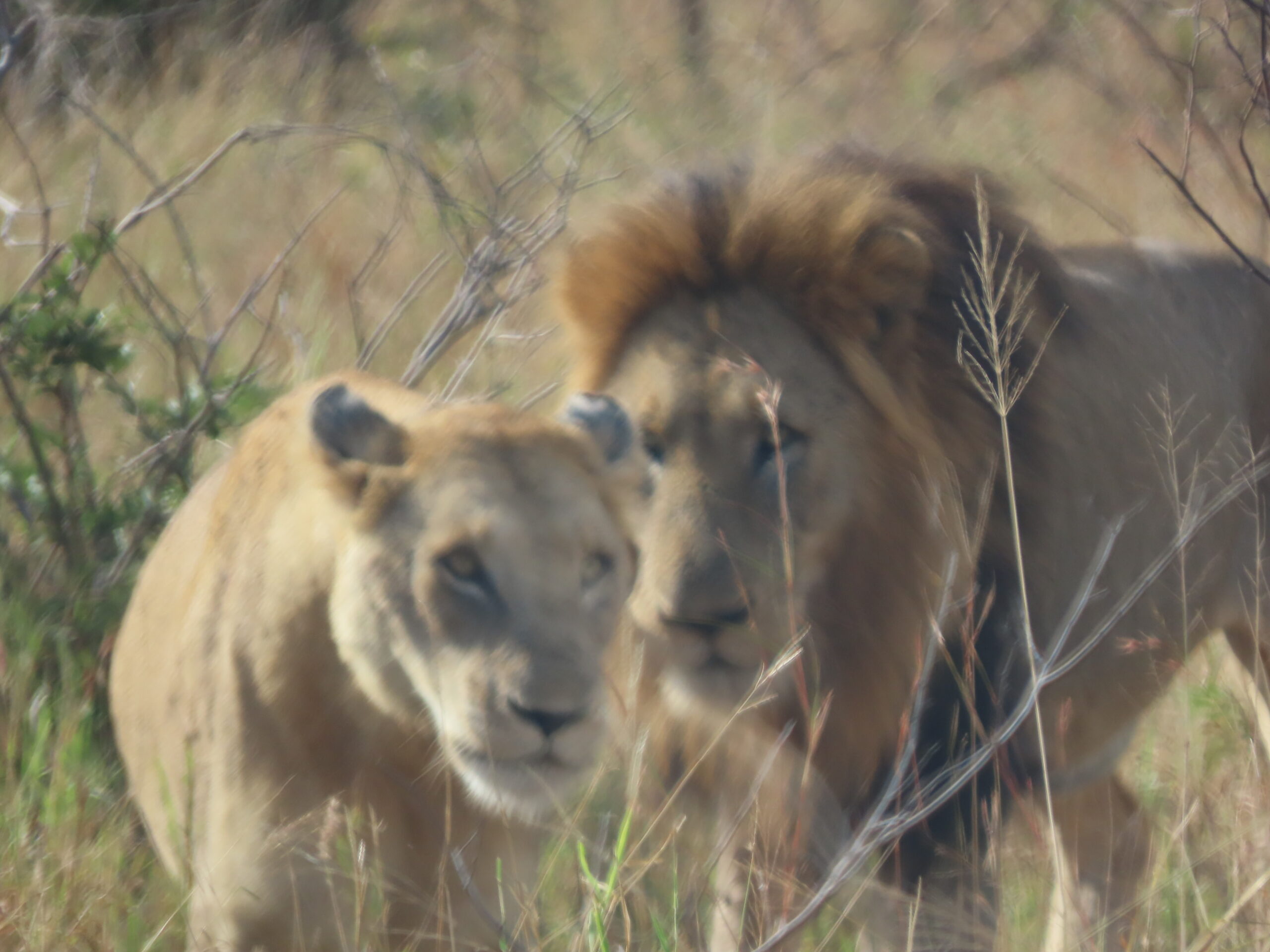
We keep our expectations in check upon entering Kruger National Park. A long time ago, we accepted the reality that we may not see much on any given day. We always have a one-year Wild Card to enter the park at no additional cost and can return anytime for more photo ops and hopefully more interesting sightings.
After the first 20 minutes of driving after entering the Crocodile Gate, we commented that it might be one of those days with few fascinating sightings. How wrong we were!

Suddenly, we spotted a grouping of vehicles and knew something exciting was happening nearby. Tom maneuvered the car as close as he could, and we saw the mating pair of lions under a bush, as shown in today’s photos.
Lions’ mating in the wild involves a fascinating, intense, and somewhat brutal process deeply rooted in their biology and social structure. Here are the key particulars:
1. Courtship and Readiness
-
Estrus Cycle: A lioness enters estrus (heat) multiple times yearly, usually lasting 4–7 days. She becomes sexually receptive and signals this with increased vocalizations, restlessness, and scent marking.
-
Male Interest: Males can detect this readiness through scent (pheromones in her urine) and behavior. One or more males may follow her closely during this period
-

Lions have very short mating sessions over many hours, if not days.
2. Mating Process
-
Frequency: Once the lioness is receptive, mating happens frequently — up to 20–40 times a day, often every 15 to 30 minutes. This continues for several days, ensuring successful fertilization.
-
Duration: Each copulation is very brief, lasting only 10–20 seconds.
-
Pain Response: The male’s penis is barbed, which causes pain when he withdraws. This pain triggers the female’s ovulation — a necessary part of feline reproduction.
-
Aggressive Behavior: After mating, the lioness often roars, snarls, or swipes at the male due to the pain. The interaction can look violent, but it is a natural part of the process.
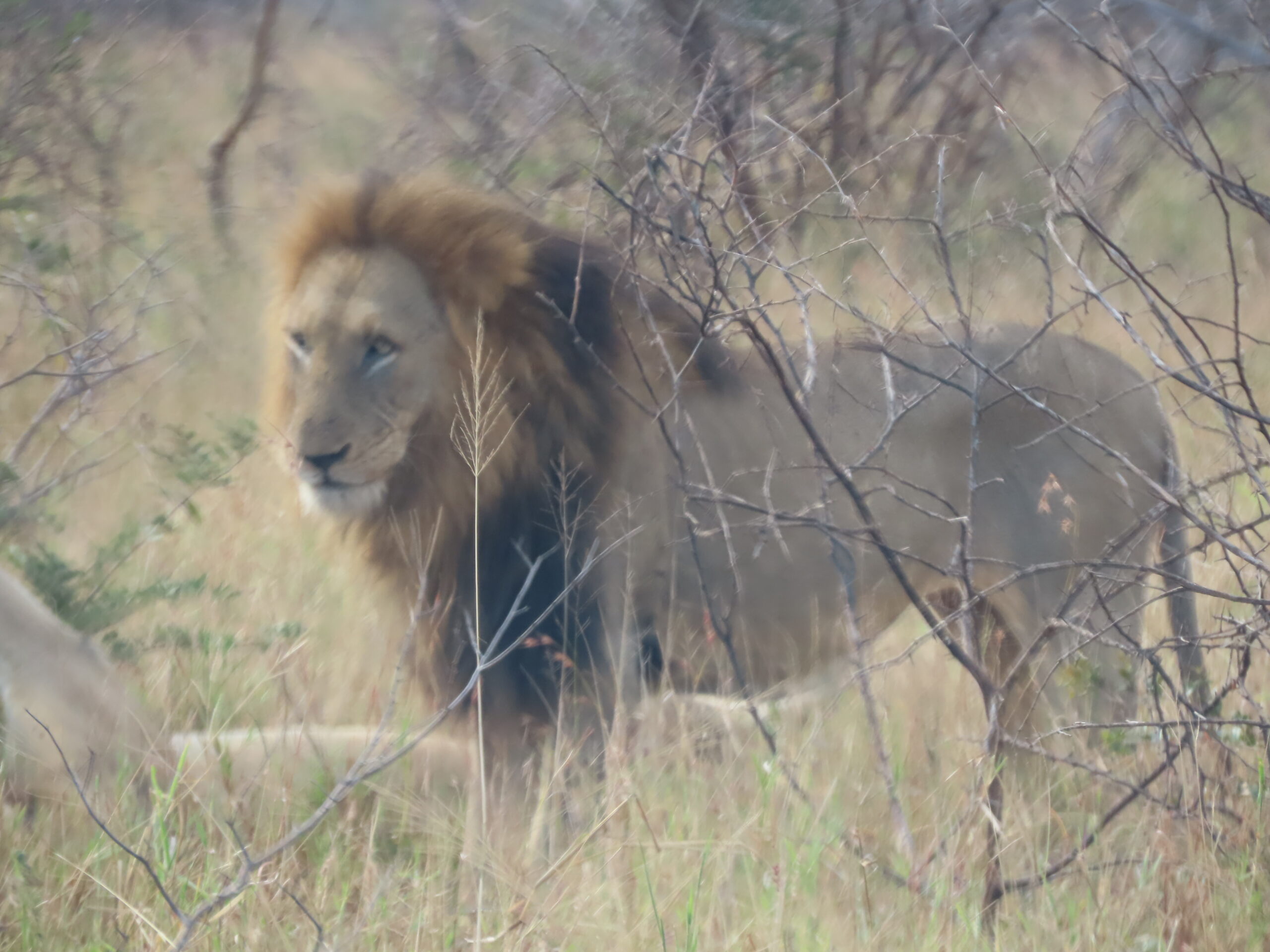
3. Monogamous Period
-
During the mating phase, the pair usually isolates themselves from the pride to focus entirely on mating. They do not hunt or eat much, and the physical toll can be significant.
4. Male Competition and Infanticide
-
Coalitions of males (usually brothers or close allies) often take over prides. If they succeed, they may kill existing cubs sired by previous males to bring females back into estrus.
-
This infanticide, though brutal, is part of the natural strategy to pass on genes quickly within a short dominance window (typically 2–4 years).
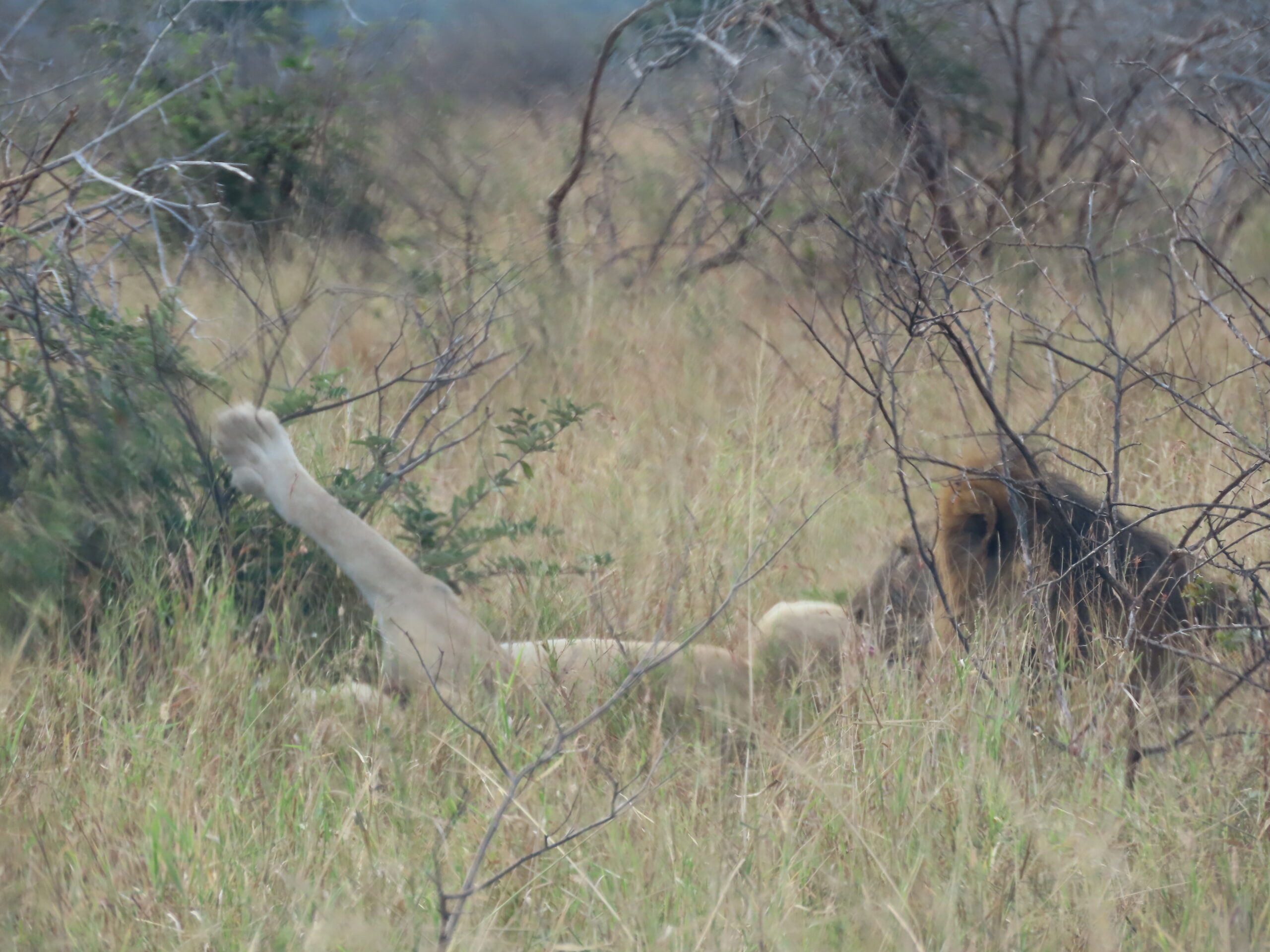
5. Pregnancy and Cubs
-
Gestation: Around 110 days (3.5 months).
-
Birth: Lionesses give birth to 1–4 cubs in seclusion and keep them hidden for about 6–8 weeks before introducing them to the pride.
6. Evolutionary Strategy
-
The high frequency of mating and the barbed penis are evolutionary adaptations to ensure ovulation and conception.
-
Mating many times also reduces sperm competition from rival males.
Lion mating is short, frequent, and physically demanding. It’s marked by a raw intensity that mirrors the pride of life’s competitive, often violent dynamics. These behaviors ensure that only the strongest genes are passed on in a harsh and competitive environment.
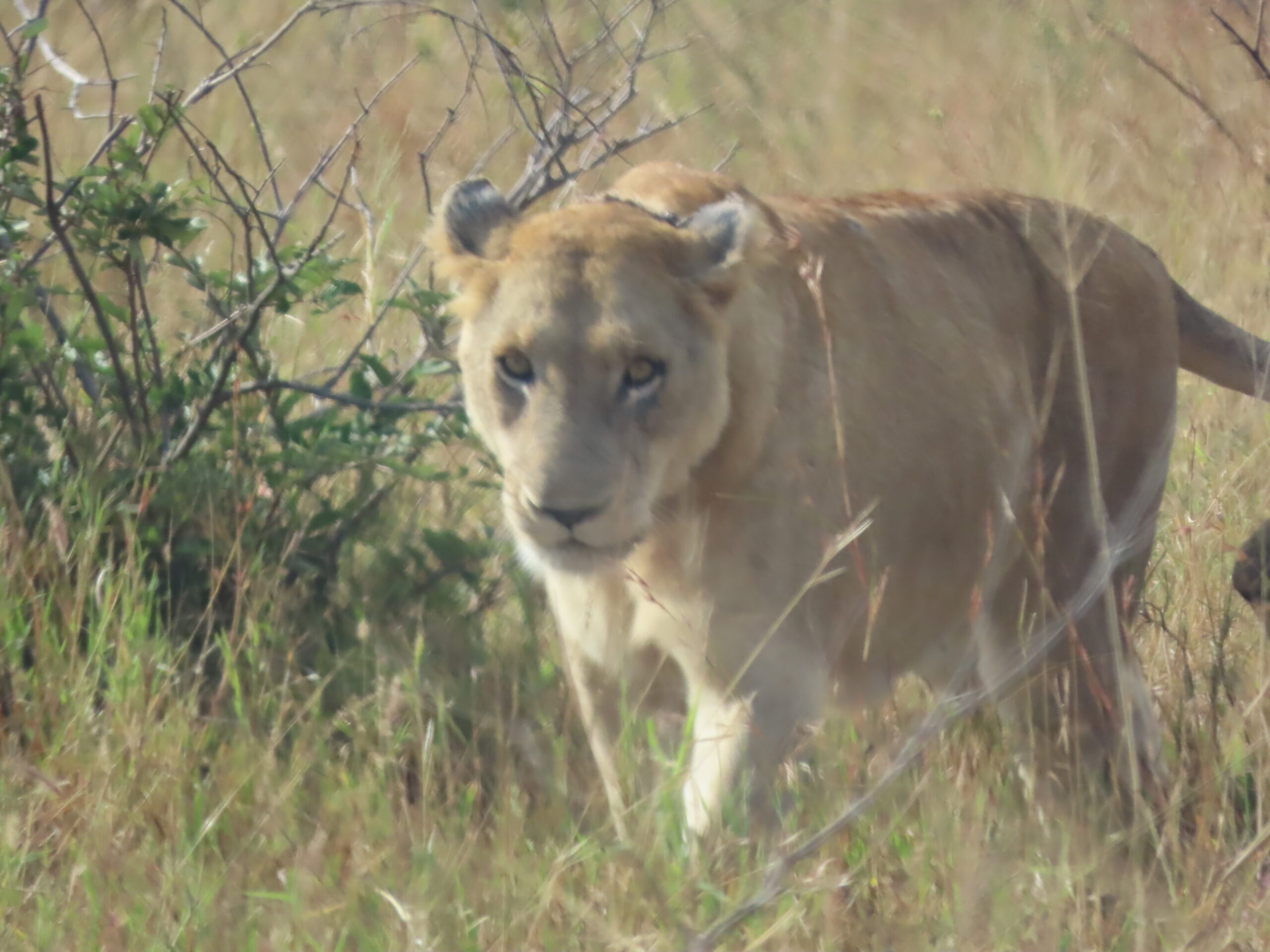
After considerable time at the sighting, unable to get any closer, we took off on our planned itinerary toward Lower Sabie, where we stopped at the Mugg & Bean for beverages. Continuing with diets, we didn’t eat breakfast but instead ordered their delicious coffee while we sat on their veranda enjoying the views over the Sabie River.
Over the next several hours, we encountered many more exciting sightings, which we’re looking forward to sharing over the next several days.
It’s been a busy morning here in the bush. Tom awoke me early this morning to let me know that Norman was here, after we hadn’t seen him in over a week. He’d cut up some apples to keep him busy until I got outside moments later. I was thrilled to see him once again. He was alone without the family, but hopefully, soon we’ll have an opportunity to see his and Nina’s new baby.
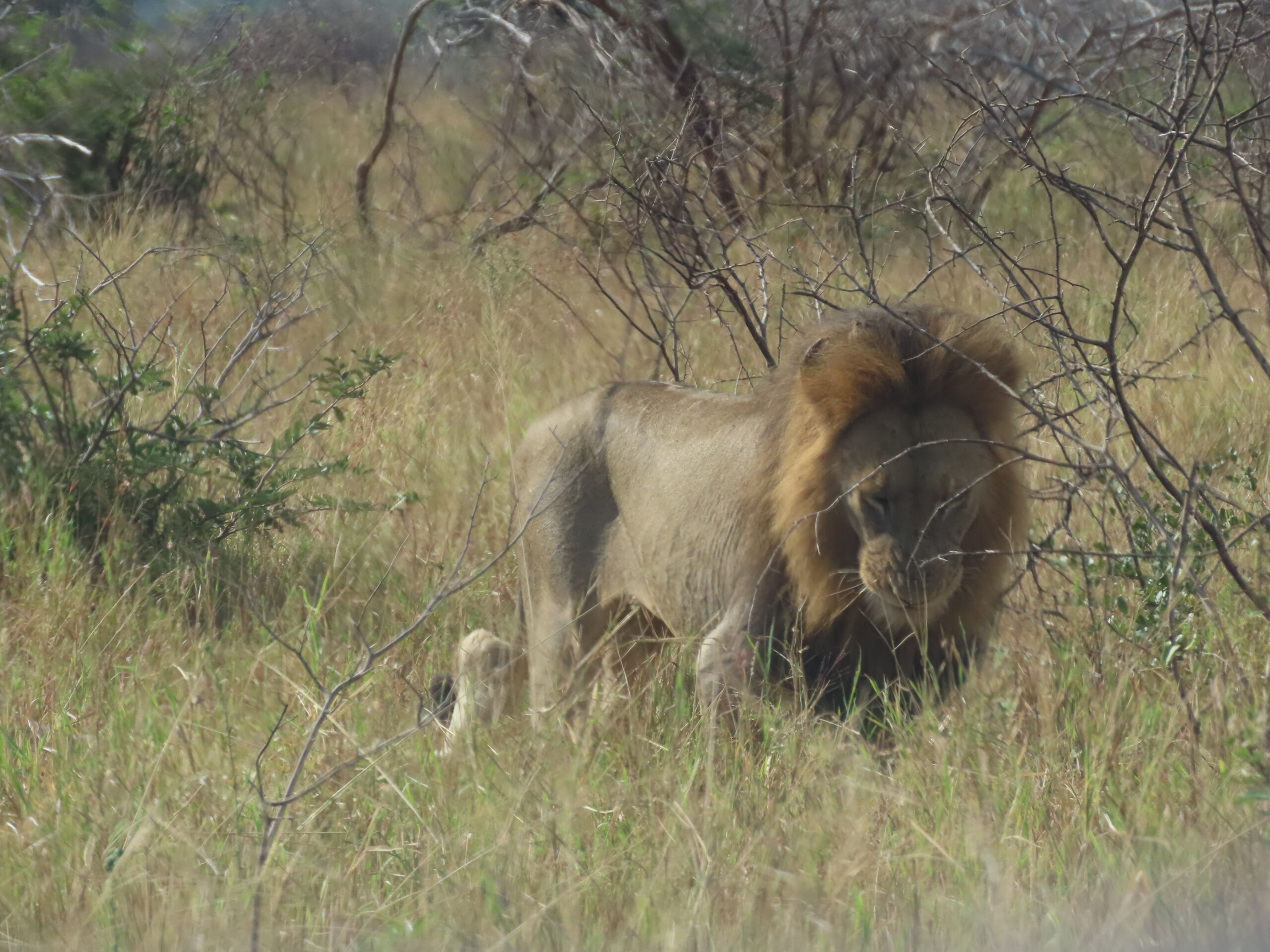
Shortly after Norman left, and I was showered and dressed for the day, a huge band of mongooses stopped by. Immediately, I cut up a good-sized batch of paloney, which they devoured in seconds.
Zebras and several kudu families stopped by. Once it settled down, I baked 36 keto blueberry muffins since there wasn’t load shedding and I could use the oven.
As always, we’ll head out to Jabula for entertainment and dinner tonight. We’ll be back with more Kruger photos tomorrow.
Be well.
Photo from ten years ago today, May 16, 2015:


